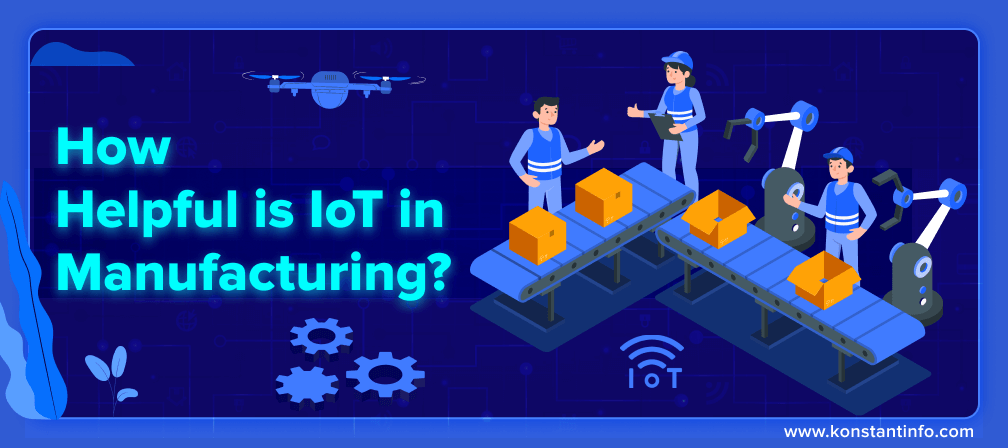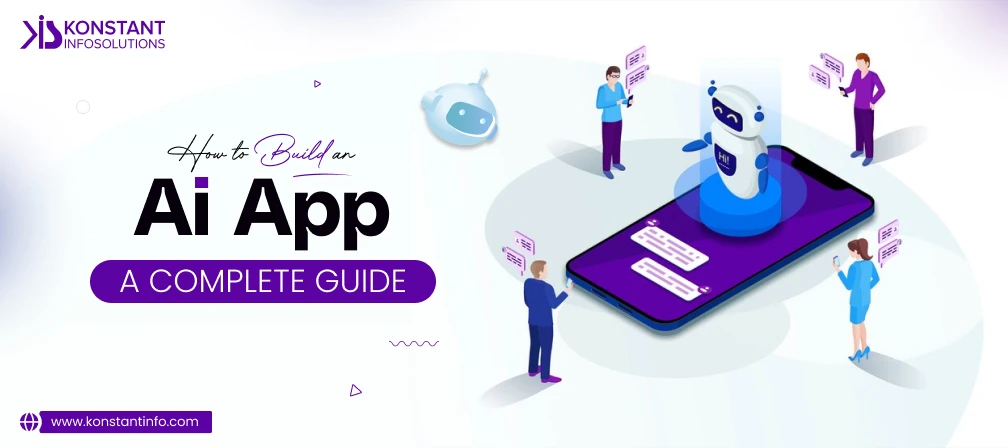Internet of things (IoT) has initiated building a brand new era stuffed with smart technologies, interconnected devices, smart processes, internet-enabled infrastructure and equally smart people who wish to make the most out of their time, money, energy, and resources. The penetration of digital sensors in every device allows high visibility, enable task automation, and controls production processes in a much better way.
As we intend to review the potential benefits of IoT for manufacturing and the subsequent use of the connected network devices therein, this work should be treated as a basis for multi-disciplinary research by businesses and operations planning to have an IoT based setup in manufacturing of their own. We have not covered the challenges and opportunities arising from IoT + Manufacturing = IoMT setup here.
What Are The Basic Building Blocks Of IoT?
All IoT systems are composed of four main but distinct components: sensors/devices, data processing, connectivity, user interface.
Are IoT and IIoT the same?
IoT and IIoT are both based on the concept of interconnected devices. But their usage differs in general. IoT is for consumer usage while IIoT is for an industrial purpose like manufacturing, supply chain etc.
How Well Have The Enterprises Adopted IoT?
Enterprises have successfully integrated IoT tools into their infrastructures which have constantly helped them in optimizing the production process, save cost and have reduced delivery times. Therefore along with being the key component of the global industrial transformation, IoT serves as a building block of the smart factory.
How is IoT Used in Manufacturing?
IoT sensors in manufacturing enable condition-based maintenance alerts. By using this within prescribed working environments for machinery, manufacturers can reduce the costs, conserve energy, eliminate machine downtime, and increase operational efficiency.
What Are The Top Use Cases in Industrial Internet of Things (IoT)?
Industrial IoT is also known as IIoT as discussed earlier and it helps in remote monitoring and operations (to check if the machine is running), smart asset management, predictive maintenance (to check if the machine is running properly) and autonomous manufacturing (to make a machine run without human effort). Additionally, quality control, inventory management, safety operations, smart packaging, smart metering often appear as top applications of IoT in manufacturing domain.
Advantages of Internet of Things (IoT) for Manufacturing
- Quality Control – Implementation of IoT allows manufacturers to make use of thermal and video sensors to collect and complete product data through different stages of a product cycle. All the products are usually checked just before they are production-ready. But testing can as well be done during the manufacturing phase like if all the attributes are within specifications and whether equipment calibration diverges from standard settings, and any inaccuracies are dealt with in time to avoid any misalignment in future.
- Inventory Management – An RFID tag is attached to every item to distinguish it from all others. This helps in keeping a record of all inventory, calculate quantity or volume. It also helps in recovering or tracing the lost inventory and notifies the department to replenish the stock. Internet of things automates or accentuates the human effort. The industries still used to work earlier, but the implementation of IoT has introduced intelligence in the operations by optimizing shared costs, estimating the availability of materials, estimating the work-in-progress, tracking the speed of movement and traffic flow of raw materials and more such things that improves handling times and enables efficient processing.
- Predictive Maintenance – Manufacturing units often follow a time-based approach to plan maintenance schedules of their machinery and equipment. Many types of equipment fail on account of age randomly and the replacement becomes costlier in the long run. If instead, we implement IoT and data science for predictive maintenance, we will be able to monitor the operating environments and perform timely analytics by making use of related data in the cloud. This helps in evaluating the actual wear and tear. These can also help in averting any loss due to leakages in plants.
- Extra Safety Operations/Facility Management – Along with optimizing the wear and tear of the machinery and equipment’s, IoT also takes care of the safety of factory workers, track KPI (Key Performance Indicators), understand their exposure to fumes, check their heart rate, anxiety levels, general movement, and fatigue, and implement the overall standardization by linking their operations technologies and IT infrastructure.
- Smart Metering – IoT has been effectively utilized in monitoring the consumption of water and electricity, to gauge the overall effective resource utilization.
- Helping Out in Packaging Smart – It involves taking materials directly from the embedded interconnected providers (digitally connected factory), enables customers to engage with it, handle a product more effectively, use sensors, QR codes, augmented reality, virtual reality, mixed reality options to further optimize operations and boost efficiency.
- Tracking Need for Maintenance – IoT is used in equipment wear where smart manufacturing helps track vibrations and temperature, provide real-time data analysis, tells you when maintenance is required, minimizes cost and potential downtime.
- To Understand Anomalies – IoT also lets enterprises detect and understand any underlying mechanical anomalies before they affect product quality. It becomes much easier to implement strict quality controls, data analytics, and intelligence throughout the production process (supply till the factory floor) with IoT.
- To Improve Overall Effectiveness – The use of the Internet of Things in information technology often extends to operational technology. It simultaneously adds intelligence to manufacturing equipment, management, and processes. An example of a smart manufacturing solution is Intel makes use of connected sensors in their devices to improve human and machine performance in real-time. It helps in communicating that data to cloud servers for intense analysis and insights. IoT helps to improve the overall equipment effectiveness (OEE) by applying IIoT based sensors and intelligent devices to make mechanical operations more visible.
- Wearables – IoT based wearables help avert any risk like factory hazards. An IIoT solution increases the safety and productivity of the workers.
- To manage Inventory, Logistics, and Supply Chain Optimization – IoT helps monitoring the availability of material, check work in progress, monitor the arrival time of raw materials, trace interdependencies amongst plants – suppliers and all the involved parties, manage the material flow and manufacturing cycle times. All these smart data helps manufacturers in predicting issues, reduce inventory and reduce capital requirements.
How is IoT Layered?
IoT technology stack or IoT stack is gradually progressing to become a Thing Stack which is a combination of sensors, microcontrollers, internet connectivity, and service platforms.
Conclusive: How Should We Extract Value Out Of IoT in Manufacturing?
An IoT application development can help accelerate development to reduce the costs of building smart apps and services. Right from influencing how developers work, IoT has extended the Information Technology to Operational Technology and imbibed a dash of intelligence to make the overall process more efficient. Manufacturing brings opportunities to drive economic growth and the adoption of the Internet of Things (IoT) is crucial for smarter manufacturing. If you’re planning to create something related, we’re up for a quick discussion. Join us!
About Author
Neeti Kotia is a technology journalist who seeks to analyze the advancements and developments in technology that affect our everyday lives. Her articles primarily focus upon the business, social, cultural, and entertainment side of the technology sector.



